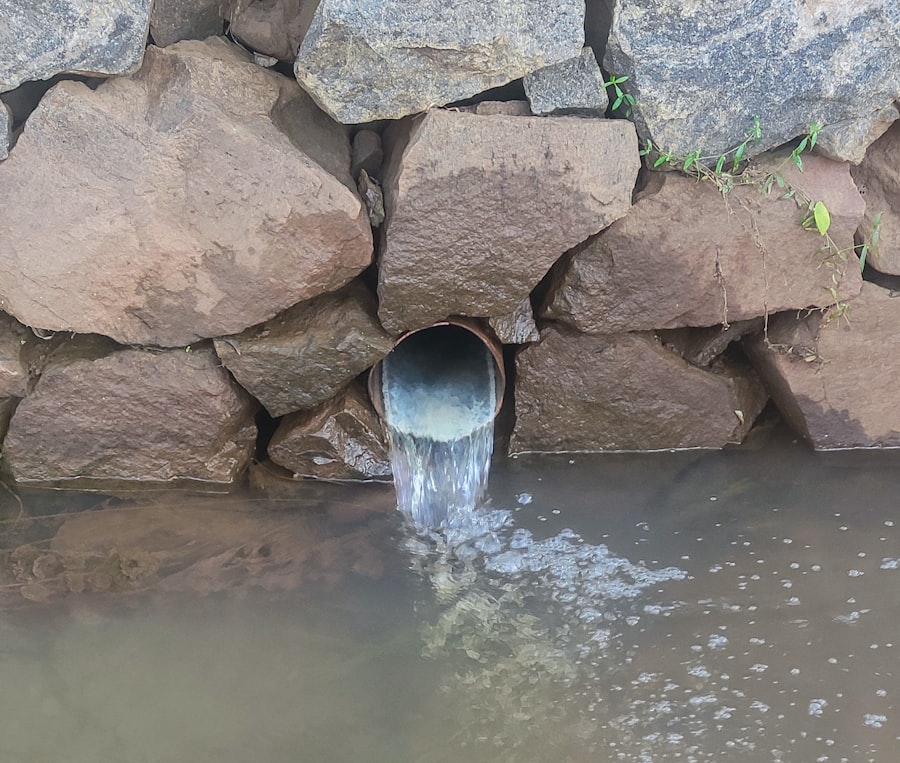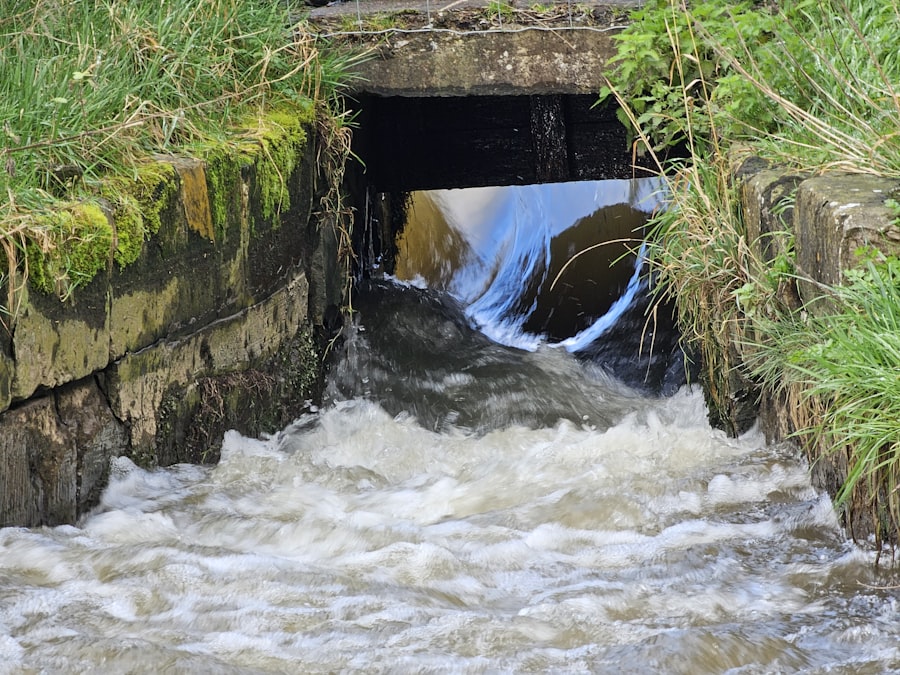Combined Sewer Overflow (CSO) is a significant environmental issue that arises in urban areas where stormwater and sewage are transported through a single pipe system. This system, designed in the late 19th and early 20th centuries, was intended to manage both types of wastewater efficiently. However, during heavy rainfall or snowmelt, the volume of water can exceed the capacity of the sewer system, leading to the discharge of untreated sewage and stormwater directly into nearby water bodies.
This phenomenon poses serious risks to aquatic ecosystems and public health, as it can introduce harmful pathogens and pollutants into the environment. The complexity of CSO systems lies in their dual function; they are meant to protect urban areas from flooding while also treating wastewater. However, the aging infrastructure in many cities, including New York City, has exacerbated the problem.
As urban populations grow and climate change leads to more intense weather events, the frequency and volume of CSOs are likely to increase. Understanding the mechanics of CSOs is crucial for developing effective management strategies that can mitigate their impact on both the environment and public health.
Key Takeaways
- CSOs occur when stormwater and wastewater overwhelm the capacity of the sewer system, leading to discharges of untreated water into waterways.
- CSOs have significant impacts on water quality, aquatic life, and public health in NYC, leading to beach closures and restrictions on fishing and swimming.
- Regulatory frameworks and requirements for CSO management in NYC are set by the Clean Water Act and the New York State Department of Environmental Conservation.
- Green infrastructure solutions, such as rain gardens and permeable pavement, are being implemented to manage CSOs by capturing and absorbing stormwater.
- Wastewater treatment plants play a crucial role in CSO management by treating and disinfecting combined sewage before discharging it into waterways.
The Impact of CSO on NYC’s Waterways and Public Health
The consequences of CSOs on New York City’s waterways are profound and multifaceted. When untreated sewage is released into rivers, bays, and other bodies of water, it can lead to significant degradation of water quality. This pollution can harm aquatic life, disrupt ecosystems, and diminish recreational opportunities for residents.
For instance, areas that were once popular for swimming or fishing may become unsafe due to elevated levels of bacteria and other contaminants. The Hudson River and Jamaica Bay are just two examples of water bodies that have been adversely affected by CSO events. Public health is also at risk due to CSOs.
The discharge of untreated sewage can introduce pathogens that pose serious health threats to individuals who come into contact with contaminated water. This is particularly concerning for vulnerable populations, including children, the elderly, and those with compromised immune systems.
Consequently, the city faces not only environmental challenges but also public health crises that necessitate urgent attention and action.
Regulatory Framework and Requirements for CSO Management

In response to the challenges posed by CSOs, a robust regulatory framework has been established at both federal and state levels. The Clean Water Act mandates that municipalities take steps to reduce the frequency and impact of CSOs.
The LTCP outlines specific goals and strategies for managing CSOs over a multi-decade timeline. It emphasizes the need for infrastructure improvements, enhanced monitoring systems, and public engagement initiatives. Compliance with these regulations is not merely a matter of legal obligation; it is essential for safeguarding public health and preserving the integrity of New York City’s waterways.
The regulatory framework serves as a guiding principle for city planners and environmental advocates alike, ensuring that CSO management remains a priority in urban development discussions.
Green Infrastructure Solutions for CSO Management
| Green Infrastructure Solutions for CSO Management |
|---|
| 1. Rain Gardens |
| 2. Permeable Pavement |
| 3. Green Roofs |
| 4. Bioswales |
| 5. Urban Tree Canopy |
Green infrastructure has emerged as a promising solution for managing CSOs in urban environments like New York City. This approach utilizes natural processes to absorb and filter stormwater before it enters the combined sewer system. Techniques such as green roofs, permeable pavements, rain gardens, and bioswales can significantly reduce the volume of stormwater runoff, thereby alleviating pressure on sewer systems during heavy rainfall events.
Implementing green infrastructure not only helps mitigate CSOs but also provides additional benefits such as enhancing urban aesthetics and improving air quality. For instance, green roofs can lower building temperatures while providing insulation, thus reducing energy costs. Furthermore, these solutions promote biodiversity by creating habitats for various species within urban settings.
As cities increasingly recognize the value of green infrastructure, it becomes clear that these strategies are not just about managing water but also about fostering sustainable urban environments.
The Role of Wastewater Treatment Plants in CSO Management
Wastewater treatment plants (WWTPs) play a critical role in managing CSOs by treating sewage before it is released into the environment. In New York City, these facilities are designed to handle large volumes of wastewater; however, during heavy rain events, they can become overwhelmed by the influx of stormwater mixed with sewage. This situation often leads to CSOs as treatment plants discharge excess flow directly into waterways to prevent flooding.
To enhance their effectiveness in managing CSOs, WWTPs must be equipped with advanced technologies and processes that allow them to treat larger volumes of water more efficiently. Upgrades to existing facilities can include improved screening processes, enhanced biological treatment methods, and increased storage capacity for excess flow. By investing in these upgrades, cities can better manage stormwater while ensuring that treated wastewater meets environmental standards before being discharged.
Community Engagement and Education on CSO Management

Community engagement is essential for effective CSO management in New York City. Educating residents about the causes and consequences of CSOs fosters a sense of responsibility and encourages proactive participation in local initiatives aimed at reducing stormwater runoff. Public awareness campaigns can inform citizens about simple actions they can take—such as reducing impervious surfaces on their properties or participating in local clean-up events—that contribute to mitigating CSO impacts.
Moreover, involving community members in decision-making processes related to CSO management can lead to more effective solutions tailored to local needs. Public forums, workshops, and collaborative projects can empower residents to voice their concerns and ideas regarding water management strategies. By fostering a culture of collaboration between city officials and community members, New York City can create a more resilient urban environment capable of addressing the challenges posed by CSOs.
Long-Term Planning and Investment in CSO Infrastructure
Long-term planning is crucial for addressing the persistent issue of CSOs in New York City. As climate change continues to influence weather patterns, city planners must anticipate future challenges related to increased rainfall and flooding events. This foresight requires substantial investment in infrastructure improvements that prioritize resilience against potential CSO occurrences.
Investing in modernizing sewer systems, expanding green infrastructure projects, and enhancing wastewater treatment facilities will require significant financial resources. However, these investments are essential not only for compliance with regulatory requirements but also for protecting public health and preserving natural resources. By prioritizing long-term planning and investment in CSO infrastructure, New York City can work towards a sustainable future where water quality is safeguarded for generations to come.
Innovative Technologies for CSO Monitoring and Control
The advent of innovative technologies has transformed how cities monitor and control CSOs. Advanced sensor systems can provide real-time data on water levels within sewer systems, allowing city officials to respond proactively during heavy rainfall events. These technologies enable better forecasting of potential overflow situations, facilitating timely interventions that can minimize environmental impacts.
Additionally, data analytics tools can help identify patterns in rainfall and sewer flow data, leading to more informed decision-making regarding infrastructure improvements and maintenance schedules. By leveraging technology in this way, New York City can enhance its ability to manage CSOs effectively while ensuring that resources are allocated efficiently.
Collaborative Approaches to CSO Management with Other Cities
Collaboration among cities facing similar challenges related to CSOs can yield valuable insights and best practices for effective management strategies. By sharing experiences and lessons learned, municipalities can develop innovative solutions tailored to their unique circumstances while benefiting from collective knowledge. New York City has opportunities to engage with other urban centers through partnerships focused on sustainability and water management initiatives.
Collaborative efforts may include joint research projects, shared funding opportunities for infrastructure improvements, or coordinated public education campaigns aimed at raising awareness about CSOs. Such partnerships not only strengthen individual cities’ capacities but also contribute to broader regional efforts toward sustainable water management.
Funding and Financing Options for CSO Management Projects
Securing funding for CSO management projects remains a critical challenge for many municipalities, including New York City. Various financing options exist that can help support infrastructure improvements aimed at reducing CSOs. Federal grants through programs like the Clean Water State Revolving Fund provide essential financial resources for municipalities undertaking significant upgrades to their sewer systems or wastewater treatment facilities.
Additionally, public-private partnerships (PPPs) offer another avenue for financing innovative solutions related to CSO management. By collaborating with private entities on infrastructure projects or green initiatives, cities can leverage additional resources while sharing risks associated with large-scale investments. Exploring diverse funding sources will be vital as New York City continues its efforts to address the pressing issue of combined sewer overflows.
Future Challenges and Opportunities in CSO Management in NYC
As New York City looks toward the future regarding CSO management, several challenges loom on the horizon. Climate change will likely exacerbate existing issues related to rainfall intensity and frequency, necessitating ongoing adaptation efforts within urban planning frameworks. Additionally, aging infrastructure presents a persistent challenge that requires continuous investment and innovation.
However, these challenges also present opportunities for growth and improvement within the realm of water management. By embracing innovative technologies, fostering community engagement, and prioritizing sustainable practices through green infrastructure initiatives, New York City can position itself as a leader in effective CSO management. The path forward will require collaboration among stakeholders at all levels—government agencies, community organizations, private sector partners—to create a resilient urban environment capable of meeting future demands while safeguarding public health and natural resources.
In addressing the environmental challenges posed by Combined Sewer Overflow (CSO) in New York City, it’s essential to explore innovative solutions and community engagement strategies. An insightful article on this topic can be found on MyGeoQuest, which delves into the impact of CSOs and potential mitigation strategies. For more detailed information, you can read the article by visiting MyGeoQuest. This resource provides valuable insights into how urban areas like NYC are tackling the complexities of CSO management through technology and policy initiatives.
WATCH THIS! The Real Cost of NYC Living: Your Wallet, Sanity, and Subway Survival Skills
FAQs
What is a Combined Sewer Overflow (CSO) in NYC?
A Combined Sewer Overflow (CSO) in NYC occurs when heavy rainfall or snowmelt overwhelms the city’s sewer system, causing a mixture of stormwater and untreated sewage to overflow into nearby water bodies.
How does the Combined Sewer Overflow (CSO) system work in NYC?
In NYC, the CSO system is designed to collect both stormwater and sewage in the same pipes. During dry weather, the combined flow is treated at wastewater treatment plants. However, during heavy rainfall, the system can become overwhelmed, leading to CSO events.
What are the environmental impacts of Combined Sewer Overflow (CSO) in NYC?
CSO events can result in the release of untreated sewage and pollutants into water bodies, leading to water contamination, harm to aquatic life, and potential public health risks. These events can also contribute to beach closures and impact recreational activities.
What measures are being taken to address Combined Sewer Overflow (CSO) in NYC?
NYC has implemented various strategies to reduce CSO events, including the construction of green infrastructure such as rain gardens and permeable pavement, the expansion of sewer capacity, and the development of CSO control plans to minimize the impact of overflows.
How can residents help reduce Combined Sewer Overflow (CSO) in NYC?
Residents can help reduce CSO events by minimizing water usage during heavy rainfall, properly disposing of household chemicals and pharmaceuticals, and supporting efforts to implement green infrastructure and stormwater management practices in their communities.
